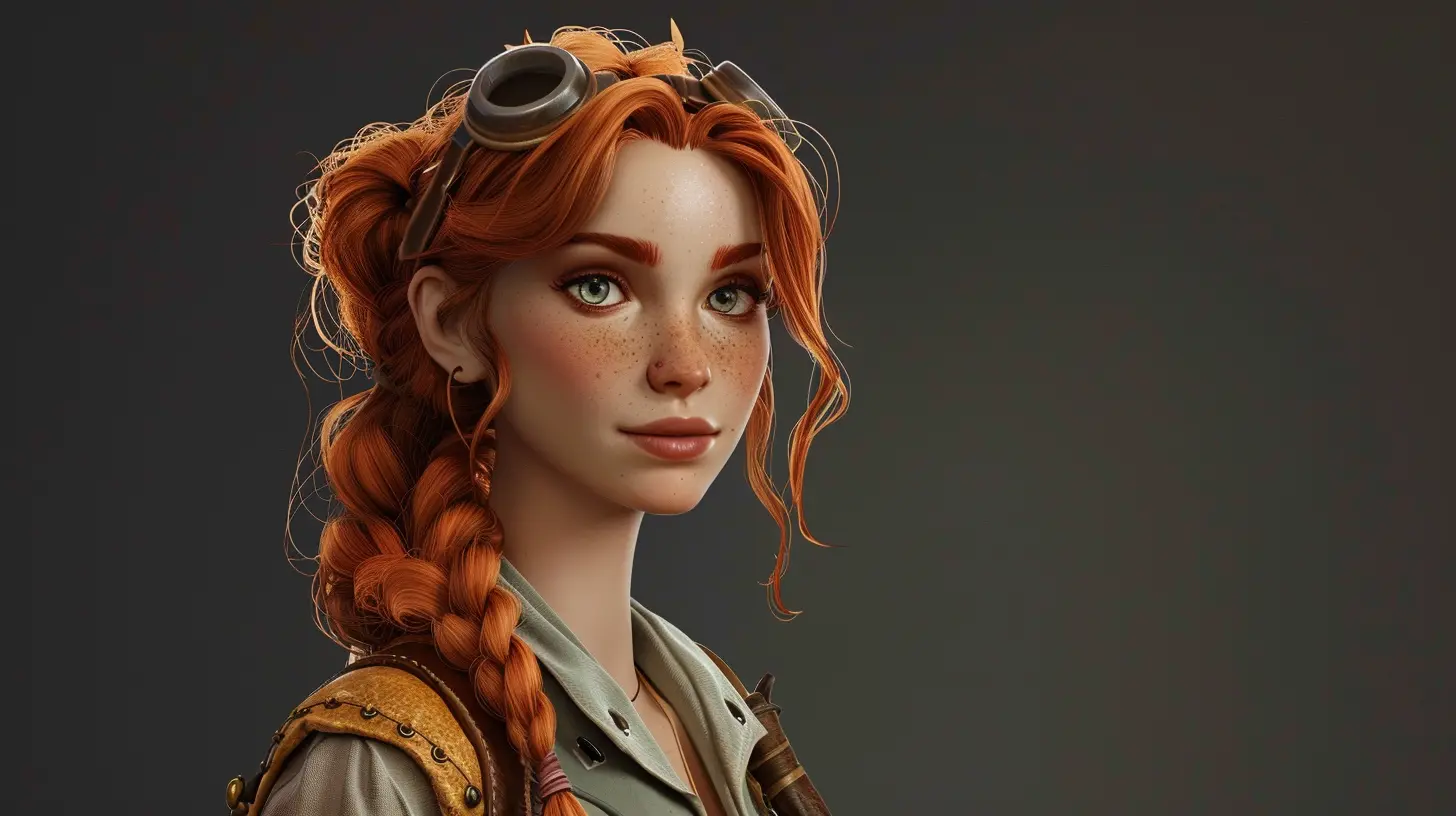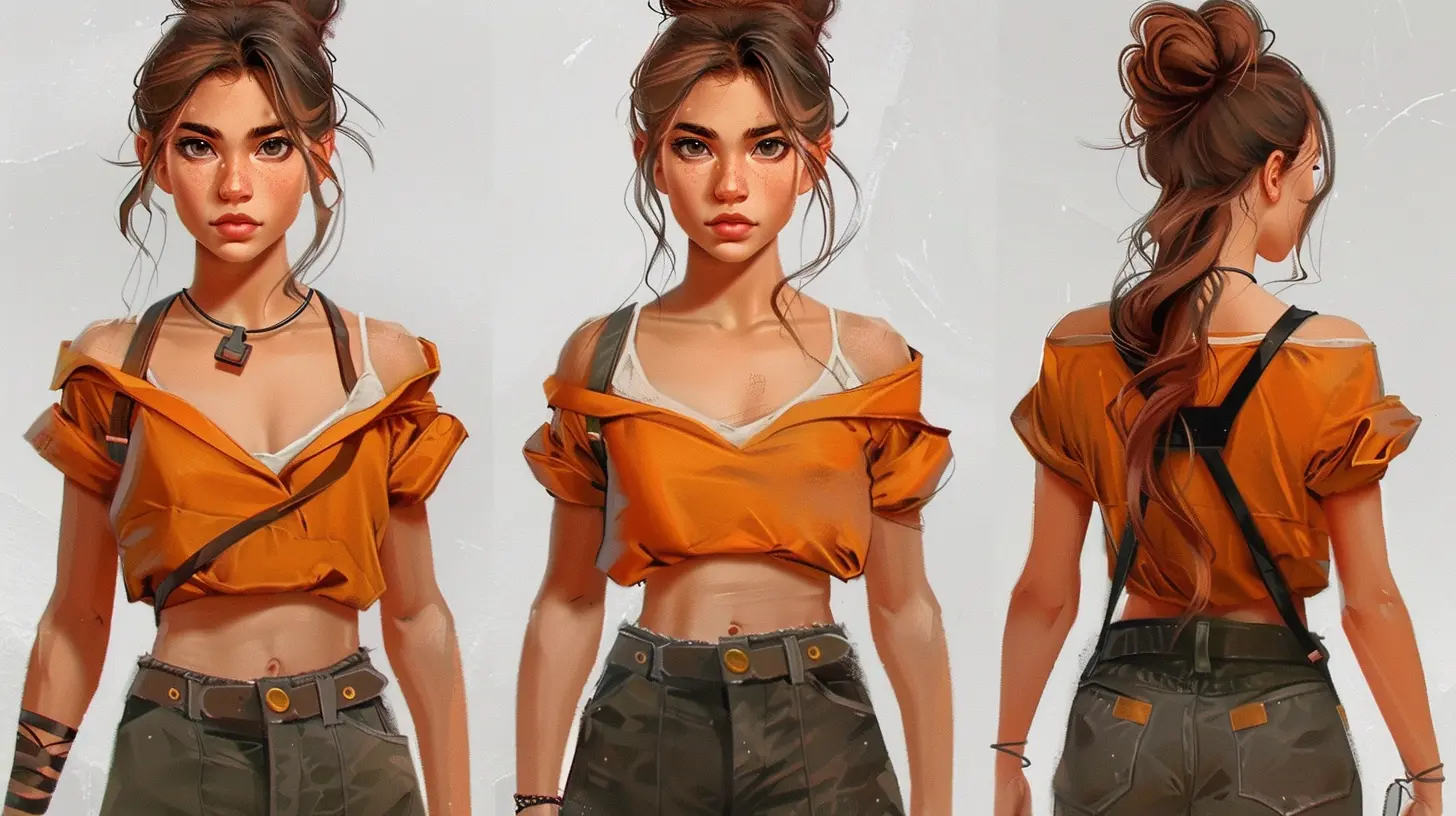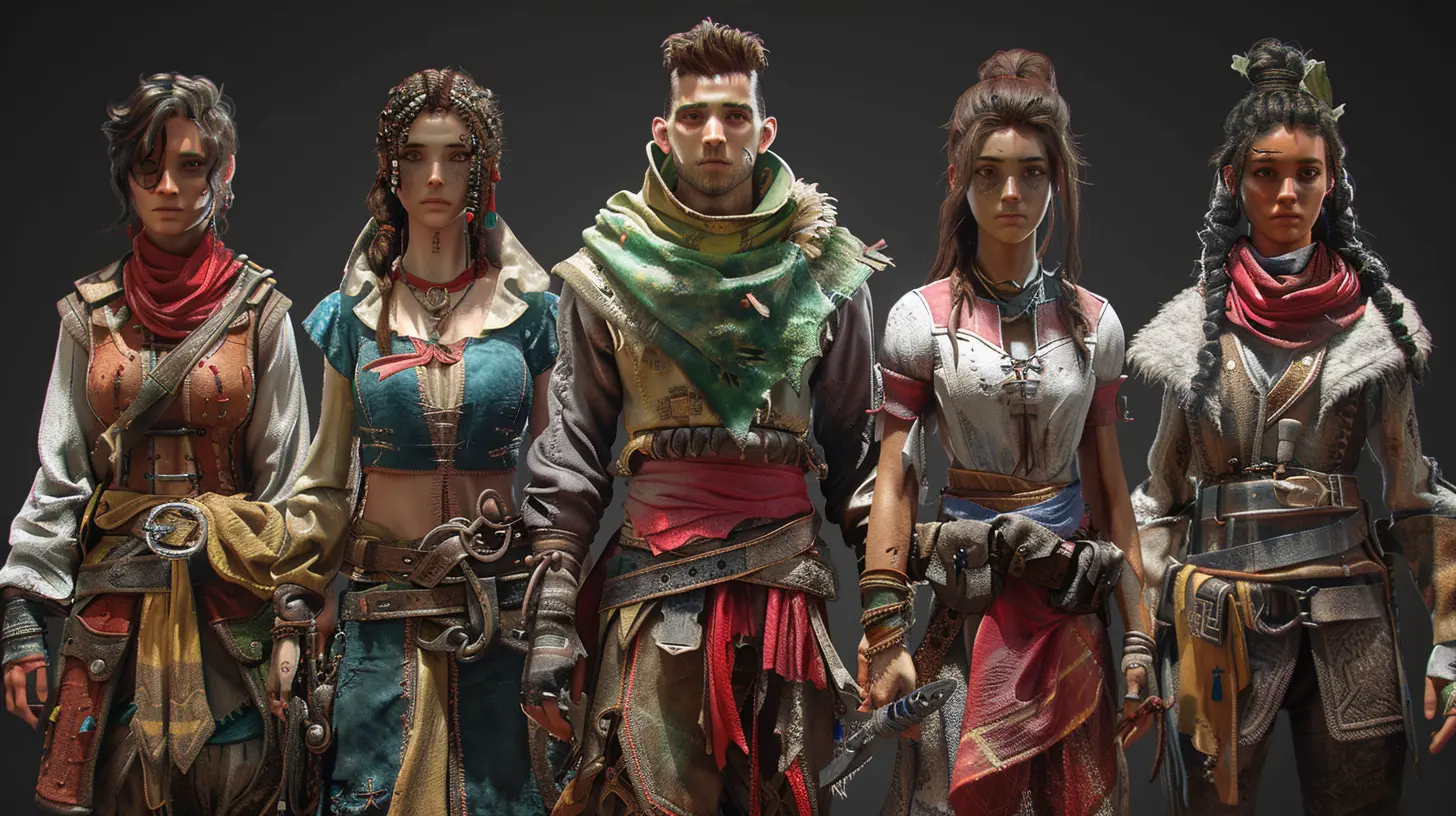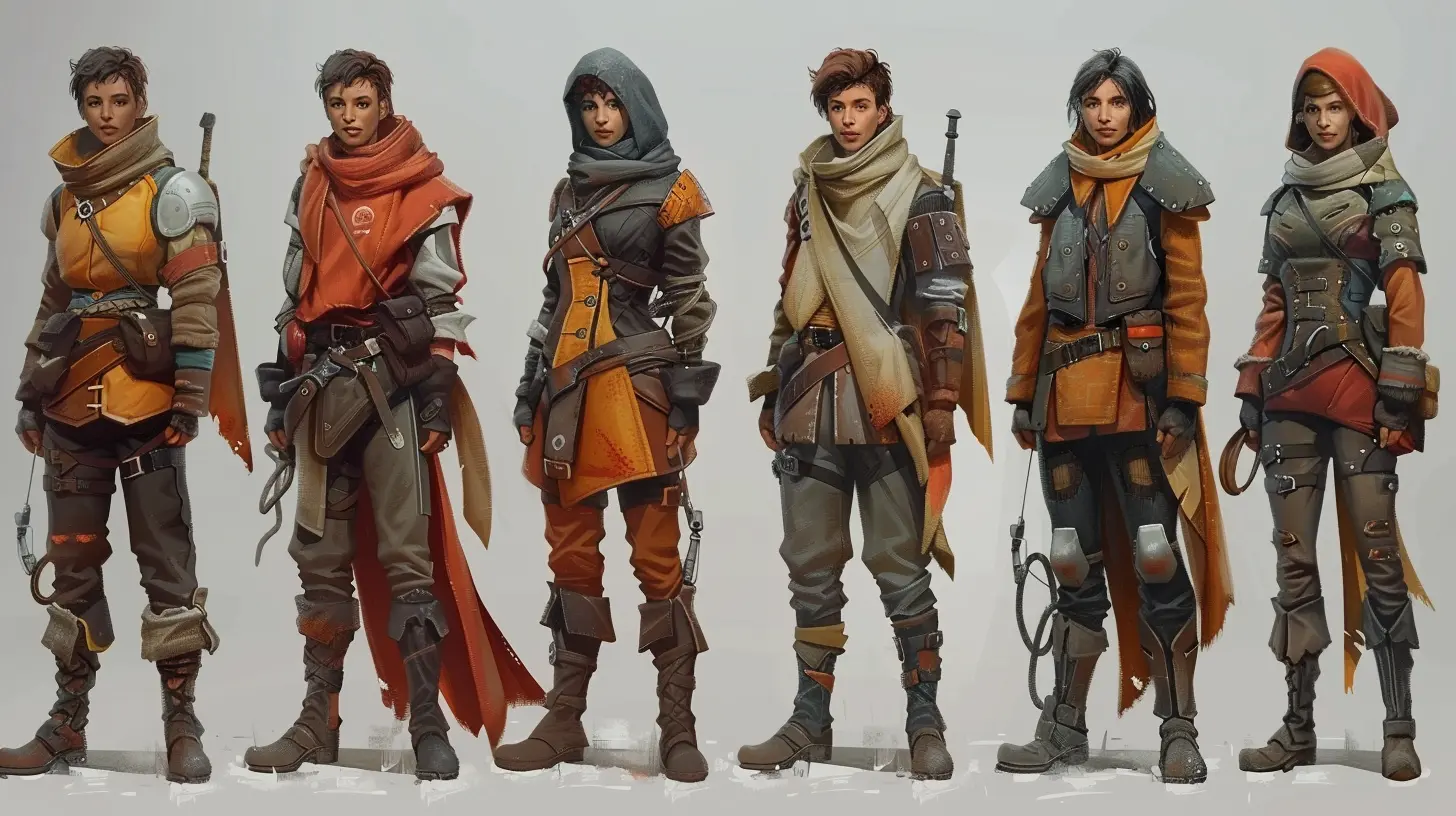Breaking Stereotypes: How to Avoid Clichés in Character Design
29 April 2025
Let’s face it—character design can be tricky. Creating characters that are memorable and engaging while steering clear of tired, overused tropes is no small feat. How many times have we rolled our eyes at the brooding, edgy anti-hero or the damsel in distress who seems incapable of saving herself? Yeah, too many to count. But hey, we’re humans. It’s easy to fall into familiar patterns when designing characters.
The good news? You don’t have to reinvent the wheel to create fresh, compelling characters. You just need to think a little deeper and break away from stereotypes. Let’s dive into how you can do just that, without losing the personality and relatability we all crave in our favorite characters.
Why Clichés Harm Character Design
First, let’s talk about why clichés in character design are a big no-no. Sure, there’s a reason stereotypes exist—they’re shortcuts our brains take based on shared cultural knowledge. But here’s the thing: they’re lazy. Instead of allowing characters to stand out, clichés box them in, diminishing the emotional connection players or viewers might form with them.Think about it this way: if your character feels like a recycled version of a dozen others, what’s stopping someone from just replaying their favorite version of them? Clichés strip away authenticity and make your work forgettable. And let’s be honest, no one wants their blood, sweat, and tears poured into a project to be met with a resounding “meh.”
Spotting and Avoiding Common Character Stereotypes
So, how do you spot clichés before they creep into your character designs? The first step is recognizing the stereotypes that run rampant in games, movies, and books. Here’s a quick breakdown of a few big culprits and how you can shake things up.1. The Brooding Loner with a Tragic Past
Ah yes, the walking emotional baggage claim. This character is often defined by their tragic backstory—a lost family, destroyed hometown, or some other heartbreaking event. Their entire personality hinges on this past pain, making them grim, closed-off, and sometimes downright insufferable.How to Avoid: You can still give your character a difficult past (we love backstory!) but don’t make it their entire personality. Let them have moments of joy, a sense of humor, or quirks unrelated to their trauma. Flesh them out with hobbies, relationships, or even a dumb inside joke they can’t stop laughing about.
2. The “Strong” Female Character™
This one always makes me cringe. The Strong Female Character™ is often one-dimensional: she’s tough, emotionally detached, and more “badass” than actual person. While the intent—breaking away from the outdated damsel trope—is good, it often swings too far to the opposite extreme.How to Avoid: Strength comes in many forms. Let your female characters be vulnerable, flawed, and real. Maybe she’s strong and nurturing. Or maybe her strength lies in empathy and wit instead of brute force. Give her a blend of traits that make her human, rather than trying to tick boxes.
3. The Token Diversity Addition
Diversity is essential, no question about it. However, slapping a stereotypical label on a character to fill a quota isn’t diversity—it’s lazy writing. This often results in flat characters who are defined solely by their race, gender, or sexual orientation.How to Avoid: Instead of making your diverse characters a surface-level addition, give them depth. Their identity is important, yes, but it shouldn’t be their only defining feature. Let them have goals, talents, flaws, and quirks. Representation matters, but respectful, nuanced representation matters more.
4. The Comic Relief That’s Just... There
Everyone loves a funny character, but when they exist just to crack jokes and lighten the mood, they risk becoming nothing more than background noise. Worse, if their humor leans heavily on stereotypes or clichés, it can feel forced and outdated.How to Avoid: Give your comic relief character layers. They can be funny and capable. Let them have moments of seriousness or vulnerability to balance out their humor. Think of them as the spice in your character stew, not the entire recipe.
Fresh Perspectives: How to Break Away from Clichés
Now that we’ve covered what not to do, let’s talk about how to breathe fresh life into your character designs. Spoiler: it’s not as hard as it sounds.1. Borrow from Real Life
Look around you! The people in your life are walking inspiration for character design. Friends, family, coworkers—all of them have quirks and complexities that make them unique. Maybe your neighbor has a weird obsession with collecting vintage roller skates, or your best friend laughs like a hyena whenever they’re nervous. Those little details? Goldmine.The thing about real people is they’re never just one thing. They’re a mix of contradictions, habits, and emotions. Channeling that into your character design will make them feel alive right off the bat.
2. Flip the Script
A fun exercise in breaking clichés is to take a trope and flip it on its head. What’s the most unexpected way to portray a knight, a thief, or a wizard? Maybe your knight hates violence and is more interested in cultivating their herb garden. Or your wizard is terrible with magic but excels at DIY crafting. Being unexpected doesn’t mean being random—it means giving characters a twist that makes them one-of-a-kind.3. Mash Up Archetypes
Who says a character has to fit into a single mold? Combine archetypes to create complexity! Maybe your stoic hero is also a hopeless romantic. Or your villain is surprisingly gentle with animals. By weaving contrasting traits together, you’ll create characters that feel well-rounded and interesting.4. Give Them Relatable Struggles
No matter how fantastical the world you’re creating is, relatable struggles are what connect your audience to your characters. Maybe your hero is saving the world, but they also can’t figure out how to tell their crush they like them. Or perhaps your villain is grappling with imposter syndrome despite their epic schemes. Human emotions and dilemmas are the glue that binds us to stories.5. Let Your Characters Surprise You
When writing characters, sometimes they’ll take on a life of their own. And that’s amazing! Lean into it. If you find your character developing in an unexpected way, roll with it. Those surprises often lead to the most authentic and memorable moments.
Character Design Do's and Don’ts
To wrap up, here’s a quick cheat sheet to keep in mind when designing non-cliché characters:DO:
- Build multidimensional characters with quirks and flaws.- Let their personality shine beyond their role in the plot.
- Write from a place of empathy and understanding.
- Give them struggles and goals that resonate emotionally.
DON’T:
- Lean too heavily on stereotypes or overdone tropes.- Create characters who exist only to serve the protagonist.
- Reduce diverse characters to token representation.
- Make humor or strength their only defining trait.
Final Thoughts: Break the Mold, Not the Connection
At the heart of it, character design is about creating a connection between your characters and your audience. While avoiding clichés is crucial, the real magic lies in writing characters who feel real. Embrace their flaws, let them be messy, and give them depth. After all, the best characters are the ones who stay with us long after the game is over or the credits roll.So, the next time you sit down to sketch out a new character, ask yourself: What makes them unexpectedly human? And how can I tell their story in a way that feels authentic? Trust me, your audience will thank you for it.
all images in this post were generated using AI tools
Category:
Character CustomizationAuthor:

Pascal Jennings
Discussion
rate this article
4 comments
Edward McWhorter
Bold character design isn’t just a trend; it’s a revolution. Ditch the tired tropes and embrace complexity. Players crave authenticity and depth—craft characters that defy expectations and reflect the diverse world we live in. Stand out, disrupt norms, and let originality reign!
May 21, 2025 at 2:46 PM

Pascal Jennings
Absolutely! Embracing complexity in character design not only enhances authenticity but also enriches storytelling. Let's challenge norms and create diverse characters that resonate with players.
Harper McAdams
Great insights! It's refreshing to see a focus on unique character design. Breaking away from clichés can truly enhance storytelling and player immersion. Looking forward to more discussions like this!
May 10, 2025 at 4:42 PM

Pascal Jennings
Thank you! I'm glad you found the insights valuable. I agree—unique character design is key to enriching storytelling. Excited for more discussions ahead!
Leona Lamb
This article highlights the importance of innovative character design, urging creators to break away from traditional stereotypes. By emphasizing unique traits and diverse backgrounds, developers can foster richer narratives and more relatable characters, ultimately enhancing player engagement and promoting inclusivity in the gaming community. A must-read for aspiring designers!
May 6, 2025 at 2:17 AM

Pascal Jennings
Thank you for your insightful comment! I'm glad you found the article valuable and resonated with the call for innovation and inclusivity in character design.
Adria Brooks
Great insights! I’m eager to see how innovative character designs can reshape narratives and challenge traditional gaming stereotypes!
April 29, 2025 at 3:10 AM

Pascal Jennings
Thank you! I'm excited to explore how fresh character designs can truly transform narratives and push boundaries in gaming.



